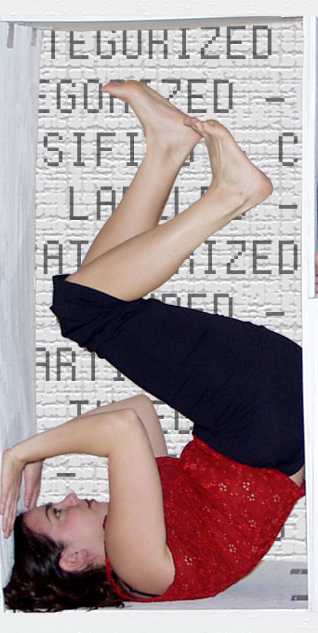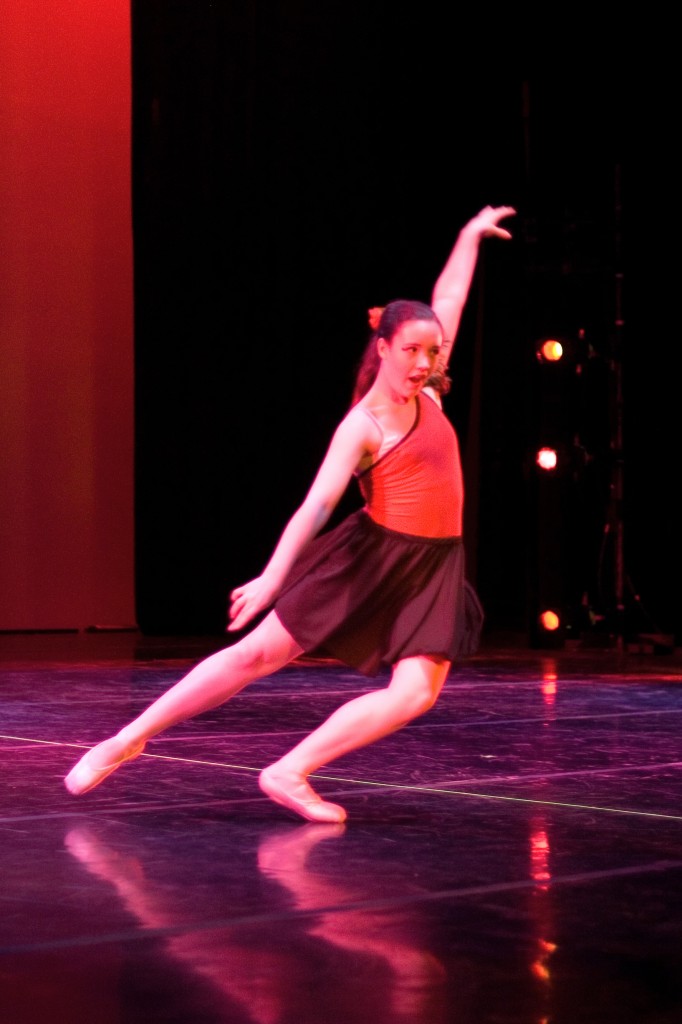by Janet Neidhardt
Teaching students how to improvise seems to be a bit of an oxymoron sometimes. How do you teach students to think in the moment and not plan their movements out but still make it look interesting? I try to teach improvisation tools much like I teach choreography tools. I assign short studies with specific guidelines and emphasize making purposeful choices. The tools we discuss should help them make educated, in the moment decisions that add to an improvisation.
I always have some students watch while others dance so that we can have discussion about what was aesthetically pleasing to us and discover the improvisation tools together. Some tools my students have come up with recently are: moments of contrast catch the eye for example different levels, dramatic changes in timing, people crossing each others’ pathways, and moments of unison can be strong after chaos.
When I first introduce improvisation I give my students two rules:
1. There is no wrong answer.
2. Go with the flow of what is being given.
Rule 1: There is no wrong answer (or movement).
Emphasizing “play time” helps students relax and not worry about getting it “right”. When students feel less pressure to make the “right” choice they tend to feel more comfortable to explore and play with different movement ideas. Many interesting possibilities come out in students’ movement when they feel uninhibited and open to different possibilities.
Rule 2: Go with the flow of what is being given. I often compare movement improvisation to acting out a scene with words. If someone yells “Fire!” in an acting improvisation and then the next person says “Do you want a cookie?” it doesn’t seem that the second person is going with the flow of what is being set up in the improvisation. So as we explore movement choices in the moment we need to always be aware of what others are doing around us and how we relate to them in the scene. With this idea comes the sense of moving with a purpose.
It can be very challenging and intimidating for students to make up movement on the spot. I have found that my students are most successful when I set up game like situations or tasks that give them focus and purpose. For example, travel with your partner from one end of the room to the other and you must always be at different levels than the other person while continuously changing levels as you go. I would then layer options and have the students repeat the exercise. For example, now do it again and this time play with extreme fast and slow movement while maintaining levels changes.
There are of course many options when creating an improvisation exercise and the challenge is to find the right balance of limitations and freedom for students to be creative and not lost. Keeping the game-like or playtime atmosphere alive within the classroom helps students to stay open minded to taking risks within their movement choices. Giving positive feedback and embracing their movement exploration helps to foster new ideas and creates a healthy environment for movement improvisation to flourish.

Contributor Janet Neidhardt has been a dance educator for 10 years. She has taught modern, ballet, and jazz at various studios and schools on Chicago’s North Shore. She received her MA in Dance with an emphasis in Choreography from the University of North Carolina-Greensboro and her BA in Communications with a Dance Minor from the University of Wisconsin-Madison. Throughout her time in graduate school, Janet performed with Sidelong Dance Company based in Winston-Salem, NC.
Currently, Janet teaches dance at Loyola Academy High School in Wilmette, IL. She is the Director of Loyola Academy Dance Company B and the Brother Small Arts Guild, and choreographs for the Spring Dance Concert and school musical each year. Janet is very active within the Loyola Academy community leading student retreats and summer service trips. She regularly seeks out professional development opportunities to continue her own artistic growth. Recently, Janet performed with Keigwin and Company in the Chicago Dancing Festival 2012 and attended the Bates Dance Festival.
When she isn’t dancing, Janet enjoys teaching Pilates, practicing yoga, and running races around the city of Chicago.






Nice article Janet! The picture cracked me up! I miss my old students!!!!!
I have used more than a few of your students Lucy! 🙂 Thanks for the comment…hope to talk soon!